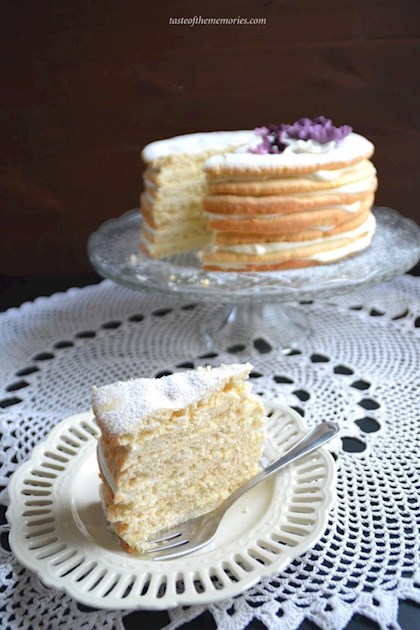I wasn't sure when to post this, should I wait until Monday?
But I see that it is already getting busy at the Cape of Good Hope, so here goes...
And so we reach the end of our journey and as no race is complete without cake I bring you two to celebrate.
The first is from Siberia, a layered cake with cream.
tasteofthememories.com/2016...
And the second is from South Africa but it is extra special because it originated in Russia. How about that for tying everything together.
Heuningkoek cake is a traditional South African dessert with an incredible classic taste. Its name may sound ambiguous. The honey cake was invented in the 19th century by a young chef who was in a bid to impress the Russian Empire empress Elizabeth Alexeievna with a honey treat.
Her love for honey treats made her fall in love with the recipe. The treat gained popularity across Russia. And today, different honey cake variations with custard, milk, and buttercream are enjoyed globally.
However, there is no documentation as to who introduced the Heuningkoek recipe in South Africa.
Here is a link to the recipe.
afrogistmedia.com/heuningko...
Look at my comment for more photos of honey cakes.
Should we also have a drink? Pop along to the bar for a selection of beverages, alcoholic and non-alcoholic. These are in addition to the more obvious Vodka, Beer and Wine.
Mors is a non-carbonated berry juice brewed for an hour and then diluted with some amount of water. The most popular berries for the drink are cowberries and blueberries, being the most commonly grown berries in Siberia.
Kvass is a traditional drink of Slavic cuisine. It has a sour taste. To prepare kvass, you need rye malt, honey, and some spices. The drink which you will get as a result is a non-alcoholic, carbonated spirit of golden color which should be consumed cold.
Siberia is famous for its special culture of tea-drinking. But there is an ancient drink called Sbiten. It is a honey-based Slavic drink, brewed with medical herbs, water, and spices (usually cinnamon, pepper, and ginger was added to the brew). It can be taken cold or hot. In the past, hot Sbiten was taken as a medicine during winter days. Hot Sbiten was considered to have some healing anti-inflammatory powers. Drink cold Sbiten during summertime, especially when you visit a traditional Russian bath (hot steamed sauna).
Afrikaans for “white lightning” (and also known as firewater), Witblits is a grape-fermented amateur brandy that definitely packs a punch. It’s mostly produced and consumed in the Western Cape and is their version of American moonshine.
Mampoer is the fruitier alternative to witblits, and is made from peach, apricot, litchi and other available fruits. It is said to be named after the Pedi Chief Mampuru, and is most commonly consumed in the northern parts of South Africa
Van Der Hum Liqueur - This original Cape citrus liqueur combines spices, herbs, sugar, tangerines, potstill brandy and diluted wine. It’s named after its original creator and is a firm favourite among South Africans.
Umqombothi is a traditional beer. Made from corn, it is high in vitamin B and has a lower alcohol content than most commercial beers. This beer is usually drunk in a communal setting where the drink is shared between friends and family. In the past, umqombothi was only drunk by men, despite having been made by the women.
Cheers everyone and thanks for coming along on this adventure.

